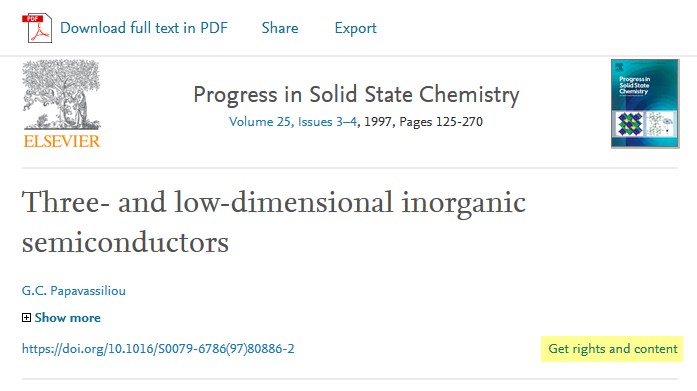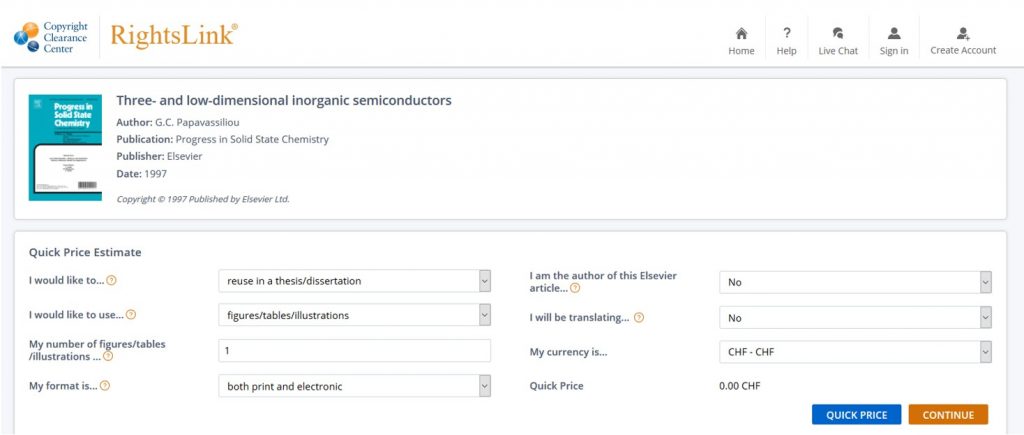This post is also available in:
 Deutsch
Deutsch
While preparing for a presentation, writing an article or thesis you find figures and data that would fit your work perfectly. Here we provide a short guide on how to get permission to reuse content published in different media.

All rights reserved
- The copyright is owned by the publisher and reusing the content without their permission is not allowed for any purpose.
- Most content in journal articles, books or on websites and blogs is published under this type of copyright.
- Watch out for the © symbol at the bottom of a website.
Before reusing material marked with “all rights reserved”, you need to ask the owner for permission. For journal articles, this can be achieved easily: on the article’s website, search for a link called “Get rights and content”, “Rights and permission” or similar.

This will take you to RightsLink® by the Copyright Clearance Center where you can provide the details on which content you would like to reuse, what you would use it for, etc.
Depending on your situation you may have to pay a fee and finally you obtain a license to reuse the content. Reusing content in a PhD thesis is free, but you still need to get the permission to reuse.

Licenses for reuse
Content published in Open Access journals and in the Wikimedia Commons is labelled with licenses for reuse. This means that you can copy and paste without having to ask for permission from the authors.
The Creative Commons Licenses (CC) help creators to retain copyright while allowing others to copy, distribute, and make some uses of their work under certain conditions:
- Attribution (BY). You can reuse the work under the condition that the creator must be credited.
- ShareAlike (SA). You can reuse the work, but you have to share the resulting work under the same license.
- NonCommercial (NC). You can only reuse the work for non-commercial purposes.
- NoDerivatives (ND). Only original copies of the work can be distributed, no adaptations allowed.
here are two license types that allow you to reuse the content without conditions:
- Public Domain – “No Known Copyright”, e.g. expired copyright
- CC0 – No Rights Reserved, creator waives copyright
Try searching the commons or Adobe’s project platform Behance to find artwork that has been labelled for reuse under CC licences.
Unlabeled content
On many websites, on blogs or social media you will find content that is not clearly labeled with a license. In this case you have to assume that it is protected and find out who is the creator of the work. Always ask for the permission before reusing unlabeled material for your own purpose!
When is all this important?
- If you reuse content in work that is going to be published (e.g. in a thesis, book, conference contribution or publicly available websites, blogs, and social media), you must check the copyright, and if necessary, ask for permission and cite your source.
- Reuse of content in a presentation, seminar, lecture, etc. within your institution (including publication on intranet or OLAT) does not count as a publication and you do not have to ask for permission to reuse. However, it is always recommended that you cite your source.
